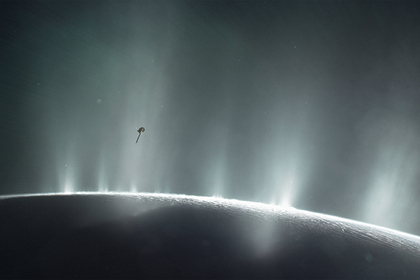Astronomers from the University of Arizona (USA) and the University of Paris Sciences et Lettres (France) have discovered a mysterious source of methane, which is probably hiding in the ocean under the icy crust of Enceladus, Saturn's moon. This source can be living organisms. The discovery is described in an article published in the journal Nature Astronomy.
The Cassini spacecraft, flying through a giant water plume that erupts from the surface of the satellite, found a relatively high concentration of certain molecules corresponding to hydrothermal activity on the bottom of the Earth's oceans, in particular, dihydrogen, methane and carbon dioxide. At the same time, the concentration of methane was unexpectedly high, which may be a sign of the activity of living organisms.
The scientists built mathematical models to calculate the probability of various processes, including biological methanogenesis, that could explain the anomaly in the Cassini data. These models combine the geochemistry of hydrothermal processes and microbial ecology. It turned out that the observed picture is consistent either with the activity of living organisms, or with chemical processes that do not occur on Earth.
First, the researchers estimated how much dihydrogen on Enceladus should correspond to the observations of the probe, and whether this amount can support the existence of a population of hydrogenotrophic microorganisms-methanogens similar to terrestrial ones. The scientists also tested whether this set of chemical conditions, such as the concentration of dihydrogen in the hydrothermal flow and temperature, can provide a suitable environment for the growth of a population of these microbes. It turned out that the hypothesis of an exclusively non-biological origin of methane cannot explain the observed concentration. Thus, the version about the presence of life on Enceladus cannot be ruled out as unlikely.
However, it is also possible that methane is formed as a result of the chemical decomposition of primary organic matter, which may be present in the core of Enceladus and partially converted into dihydrogen, methane and carbon dioxide through a hydrothermal process. This hypothesis can be confirmed if it turns out that the moon of Saturn was formed as a result of the accretion of the material rich in organic substances that make up comets.
Alexander Enikeev

